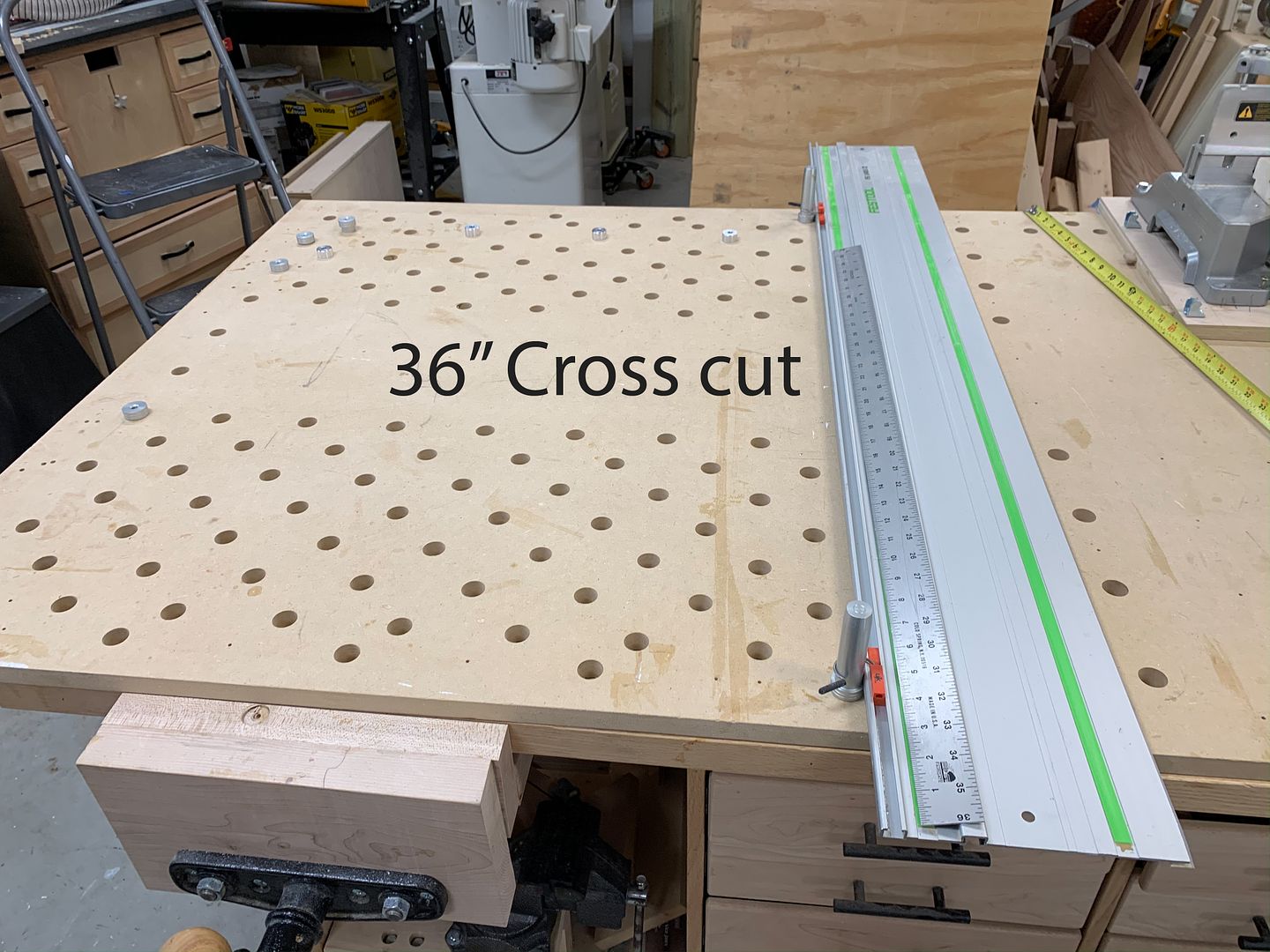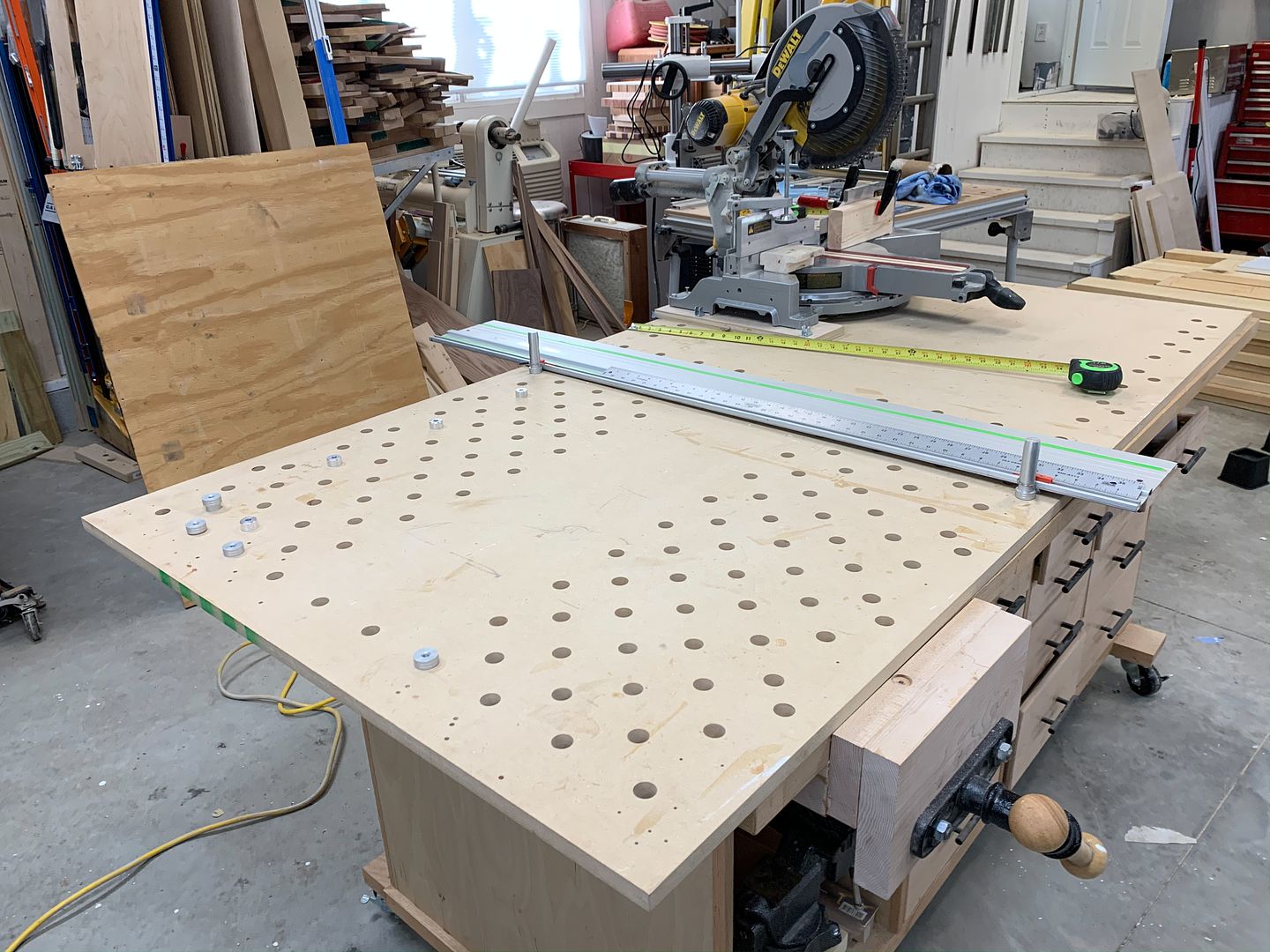I saw the very recent thread on assembling cabinet boxes, but I decided that this question necessitated its' own post. I have built cabinets before, my kitchen and several bath vanities, and due to face frame construction, modular design and attached backs, have never had issues keeping the boxes square enough. However, I seem to be having a problem lately with getting the actual parts square, i.e. having two edges perpendicular to each other. I don't really have the capability to crosscut an 8' long, 24" wide sheet of plywood with my table saw, so I make the cuts by marking with a reasonably accurate framing square or a good quality drywall t-square and then crosscutting with my track saw (an older EZ-Smart setup). I am finding that my parts are out of square. By out of square, when I measure diagonals, they could be as much as 1/8" difference between the diagonals, which is way too much for me. I would be happy with 1/32" or even 1mm (I can metric too!) which would get me a decently square enough cabinet piece. It's either my measuring technique, the square itself which is inaccurate, or my cutting method, but I find if I am careful, I can split a line made by a 0.5mm mechanical pencil with my cuts. So I'm pretty sure it's the square.
What techniques do you guys use, those of you who don't have a $8,000 sliding panel saw in your shop, to guarantee that your cabinet parts, or ANY large wide crosscut, is square to an adjacent edge? What tools would be recommended to mark a highly accurate perpendicular cut line? The YouTube videos I've seen on cabinet construction kind of gloss over the whole thing, they go from full sheets to a pile of cut parts in high-speed or stop-motion and nobody even mentions measuring and marking.




 Reply With Quote
Reply With Quote







